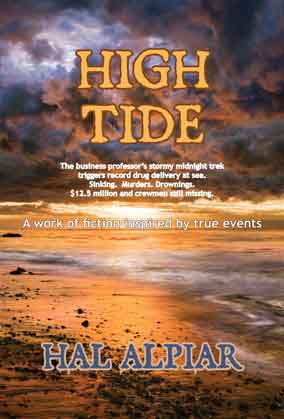Sep 21 2010
BRANDING BREVITY
It’s supposed to be
7 words or less, but
look what just 3 can do!
Take this 125-SECONDS business creativity stimulation test!
When you set out on the path to developing a branding line, slogan, themeline –whatever you want to call it– marketing experts suggest targeting seven words or less. Sounds easy until you realize they also prescribe that the seven words tell a story with a beginning, a middle, and an ending . . . oh, yeah, and by the way, be persuasive! Yikes!
Well, in case you’re not word-challenged enough (and willing to admit it) that you decide the best route is to find yourself one of those marketers of few words to create your verbal image, here’s a simple creativity stimulation exercise:
Allow yourself five seconds of what I call “Freefall Thinking” for each of the following 25 three-word sets.
(Yes, I know that’s a whole 125 seconds out of your life, but what the hey, you’re an entrepreneur who takes reasonable risks, right? So go for it! You might surprise yourself!).
Be aware that each three-word set could be a book title — so don’t dwell on any one of them. Breeze through the list as you scribble notes to yourself, but do make a mental note of appreciation for how MUCH each three-word set can conjure up in your imagination.
Jot down (yes, on a real, live piece of paper) the first thing about your business that comes into your mind as you read each line. No you will not be required to pass these papers in; you can stick ’em in your pocket for 21 days though, and rest assured that your notes will make you think of something VERY exciting!
Ready. Set. Read and Jot!
-
Get it done!
-
Girls are smarter.
-
World Wide Web.
-
Not Enough Time.
-
Walk this way!
-
You have cancer.
-
New and Improved!
-
Work. Work. Work.
-
It’s A Boy!
-
This won’t hurt.
-
Take it away!
-
Make it count!
-
I Love You.
-
Tow-Away Zone.
-
One More Round.
-
Up in smoke.
-
I Pledge Allegience.
-
Take a vacation!
-
Dog Day Afternoon.
-
Wine. Women. Song.
-
Around the world.
-
I don’t care!
-
Aw, come on!
-
Health and happiness.
-
Benefits, not features!
And the winner is . . . you.
There is no scoring here. Oh, I know that’s a terrible thing for you to have put yourself through and not have some way to rate your performance. The point is that you know how hard or easy this 3-word expression association test is for you.
And you know better than anyone whether you need just a little fine-tune coaching, or to dump the whole task in a competent lap and walk away because it’s too time-consuming, or that you get it and you’ve got it, and you’ll do it yourself!
If you really do this exercise, you will:
A) Produce some awesome idea that will have major impact on your business, and maybe even your life! (No joke about the 21 days!)
B) Prove to yourself that you really DO have a way with words and should start attacking that 7-word themeline on your own or
C) Underscore that you are a disaster with words and creative verbal expression and it might be a very good time to start shopping around for one of those marketing wordsmith wizards.
www.TheWriterWorks.com or 302.933.0116 or Hal@BusinessWorks.US


